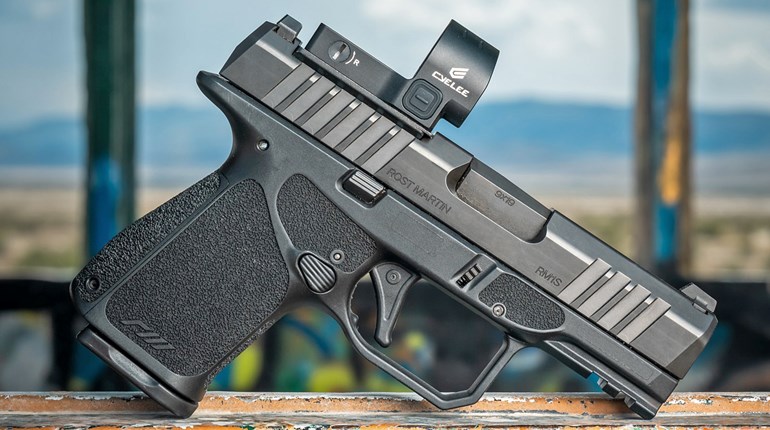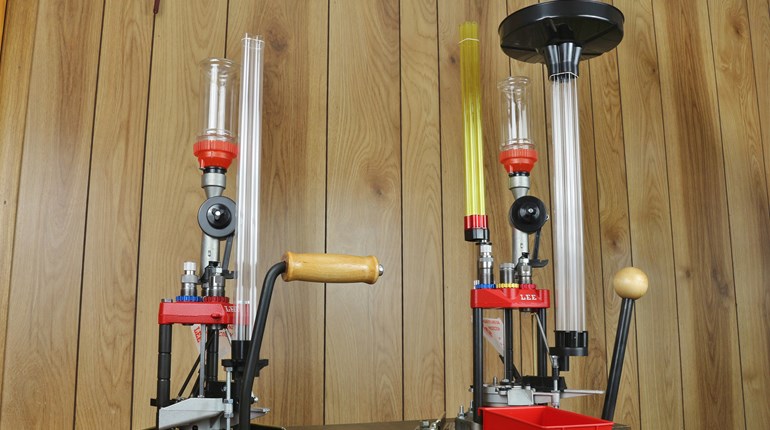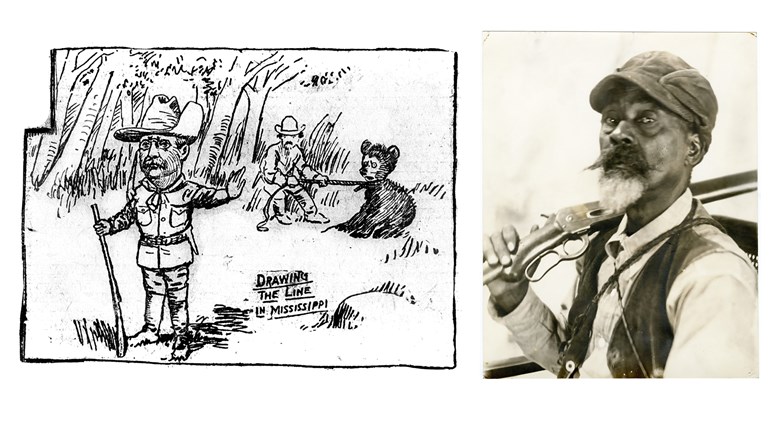
It was the last morning of our aoudad hunt on the Cibolo Creek Ranch in southwestern Texas, in the middle of the Chihuahuan Desert, and we were definitely having trouble getting close to a ram. It was late February, and those sheep-goats from Northern Africa had been hunted hard for five months and were definitely skittish. Spotting the herd on a steep side hill, we noted the ram on a flat outcropping of rock, about 100 feet below the ridgeline. We were set up next to a small bush—hardly the kind of cover I’d wished for—and getting any closer was absolutely out of the question. I had an accurate .300, and a tripod with rifle cradle set up in a rock-solid sitting position; the only problem was that the aoudad herd was a long way off. My buddy Shawn Skipper and I both confirmed the distance using the new Leupold rangefinding binocular, and both came up with the same big number: 650 yards, even. Dialing the VX-6 scope to that exact distance and working together to verify that none of us saw any wind at all—a rarity in West Texas—I broke the trigger and killed that ram.

Without a rangefinder, that shot would have been an impossibility. Even using the common rangefinders, with a magnification range of 4x or 6x, I’d have passed on the opportunity, skeptical about exactly which object we were hitting with the rangefinder—the ram or the rocks behind him. But the Leupold BX-4 Range HD Gen 2 binocular we were using had 12x magnification, and even at that range we were confident on the distance reading. I first came across a rangefinding binocular on an African safari when my PH Brian van Blerk had a green binocular which seemed to magically generate the distance to every animal we saw, and with a big-bore double rifle that made a difference. These days, they are becoming a regular sight among guides and Professional Hunters, as they combine two valuable pieces of gear, even if at a weight increase over a conventional binocular. And with shooting (and hunting) distances ever increasing, the need to know the distance to your target becomes even more important.

I’d spent a considerable amount of time with Leupold’s first rangefinding offering—in my case the 10x42mm variant—and found it to be an excellent product. I am a Licensed Land Surveyor by trade, so I have the ability to measure distances down to 1/16th of an inch (though that level of precision is not needed for our purposes) and found that the rangefinder built into the BX-4 Range HD line was wonderfully accurate; in fact, I tested it out to 1,300 yards with distances coinciding with my surveying total station within a yard, under optimum conditions. The Gen 2 variant has some significant upgrades.
The same TBR/W technology—common to many of Leupold’s rangefinders—is installed in the BX-4 Range Gen 2, and takes into account the shot angle, even helping the shooter adjust for wind. Leupold now includes the Archer’s Advantage software, which considers the weight of your arrow, among other parameters, for the bowhunting crowd who want their rangefinding binocular to handle all seasons. The unit can be programmed to give ballistic solutions in MOA or milliradians, as well as display distances in yards or meters. The OLED display is adjustable for brightness, with all data being displayed in the right lens. The electronics are powered by a single CR2 battery stored in the center of the focus dial, and Leupold indicates the battery will give over 3,000 actuations. The unit powers itself off when not in use.

The Gen 2 extends the distances at which the unit will measure; Leupold’s literature indicated that reflective targets can be read to 4,000 yards (I couldn’t find anywhere to test the unit that far), trees can be measured out to 2,000 yards (that I did test and it worked) and up to 1,400 yards on deer and similar sized animals (the only willing participant I found was standing at 957 yards).

The glass itself is excellent; I feel that in the last decade Leupold’s engineers have greatly increased image quality in their scopes and binoculars, and the BX-4 Range HD Gen 2 is no exception. Using them for the aforementioned aoudad hunt, which requires a whole lot of glassing, I had no eye fatigue, nor did I have any issues properly focusing the unit; the edge-to-edge clarity of this binocular was excellent. The body of the Gen 2 is now housed in a smooth Shadow Gray armor—the original had a distressed/stippled outer armor—which gives a good grip whether with bare hands or with gloves.

The unit has two buttons—one on either of the barrels—and can be programmed to use either, so the lefties can customize the unit. Scrolling through the menus is simple, even for the technologically challenged, and the electronics within the unit are covered by a two-year warranty, while the rest of the unit has a lifetime warranty. The Gen 2 is offered in two magnification levels: a 10x42mm and a 12x50mm (I used the latter). Both versions weigh about 37 ounces, with the 12x model having a length of 6 ½ inches with the eyecups screwed in. Leupold ships this binocular with a bino harness, lens covers, and a lens cleaning cloth.
What we’ve got here is a very powerful tool, in addition to a binocular with excellent clarity. The ability to accurately and precisely ascertain the distance to your target, as well as have readily available ballistic data all wrapped up in one unit makes a whole lot of sense, and Leupold’s BX-4 Range HD Gen 2 represents a common-sense approach to this type of unit. I’m not the most technologically proficient guy, but I had no issues using the varying options and appreciate the rugged design of the new Gen 2 variant of the BX-4 Range HD. The 10x42mm binocular has a retail price of $1,599.99 (Leupold doesn’t use an MSRP, their pricing represents the street price), and the 12x50mm has a price tag of $1,799.99; you can check out both models at leupold.com.




































